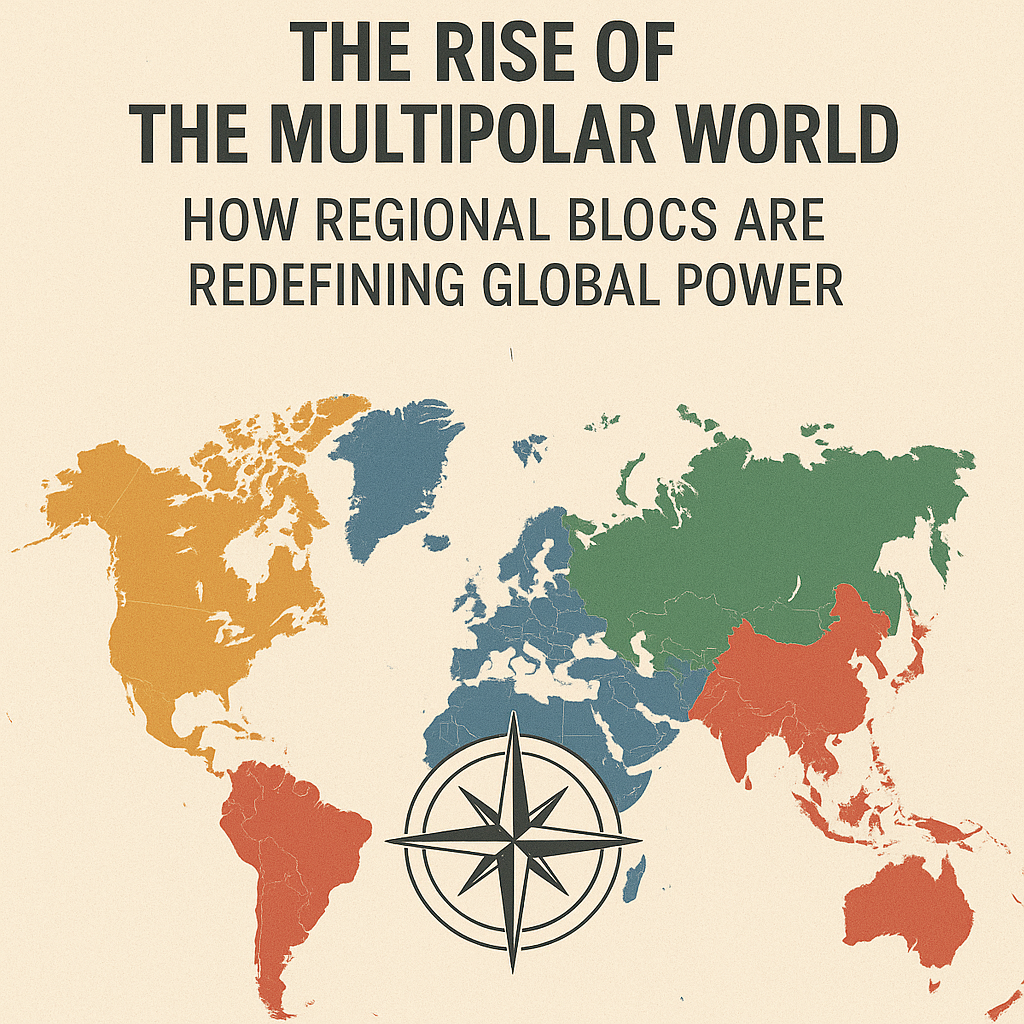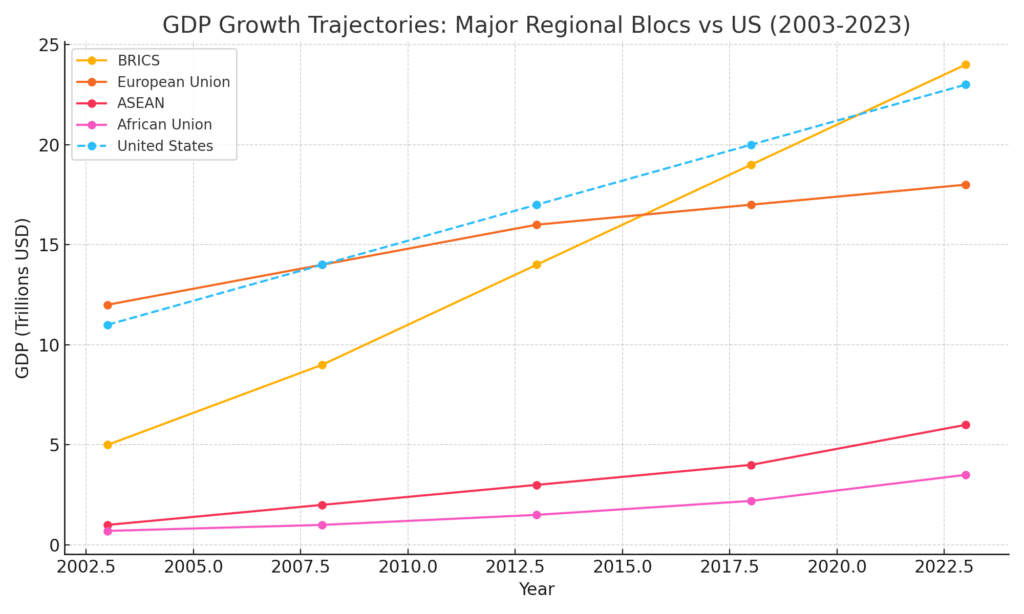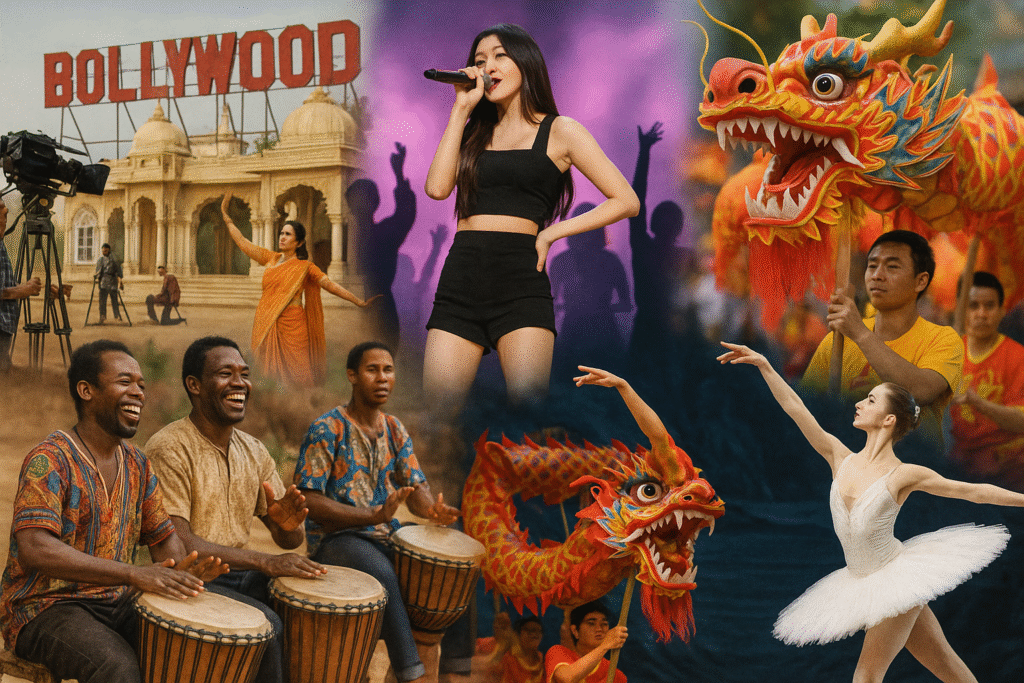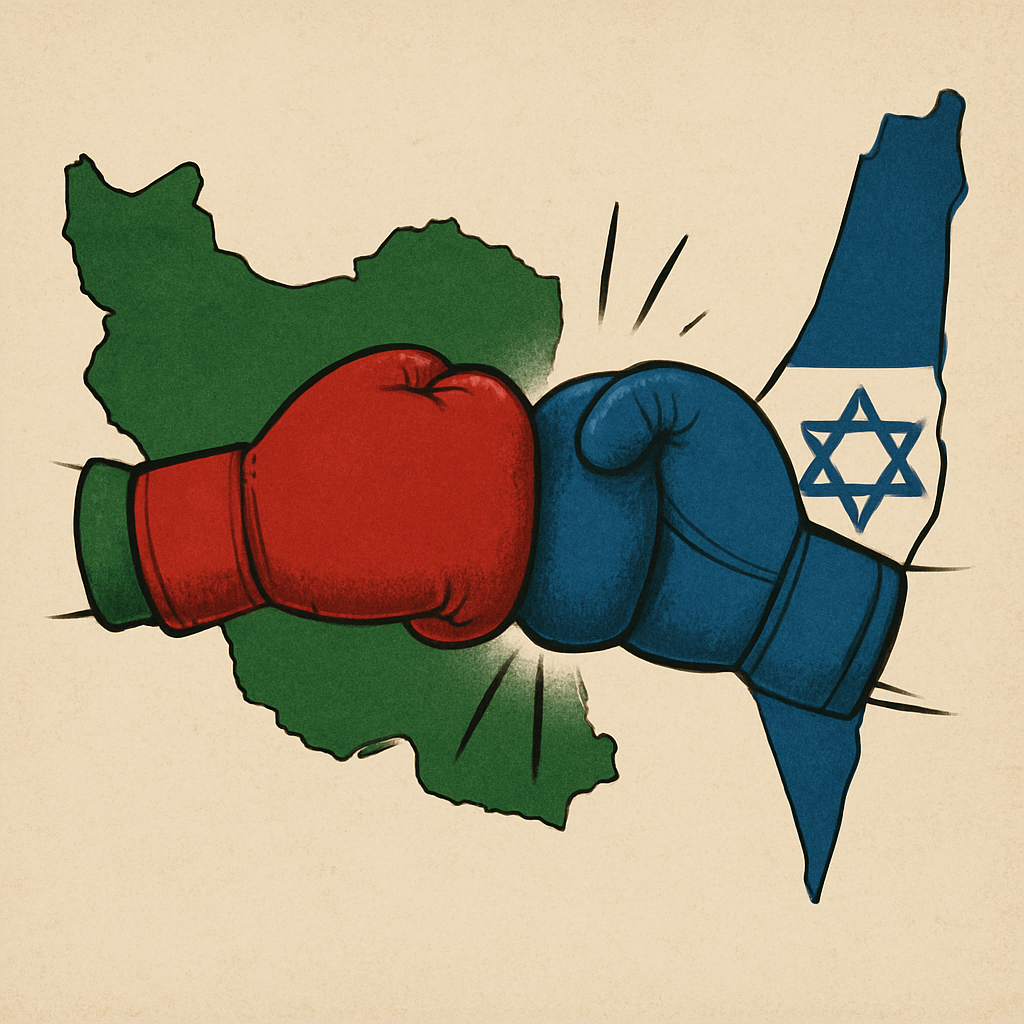The post-Cold War era ushered in a unipolar world order, with the United States at the helm of global influence. However, as we venture deeper into the 21st century, the tectonic plates of global power are shifting. We are witnessing the emergence of a multipolar world—a landscape where power is distributed across multiple regional blocs, each vying for influence, resources, and strategic advantage. This transformation is not merely a redistribution of military might; it is a complex interplay of economics, culture, technology, and ideology.
This article delves into how regional blocs—such as BRICS, the European Union, ASEAN, the African Union, and others—are redefining global power structures, shaping new alliances, and challenging the once-dominant Western-led order.
From Unipolarity to Multipolarity: A Historical Shift
Following the Cold War, the United States stood as the unrivaled superpower, influencing global finance, military alliances, and cultural trends. The 1990s and early 2000s were marked by a Western-centric globalization model. Yet, cracks in this order emerged post-2008, as the global financial crisis exposed vulnerabilities, and as emerging economies began asserting their autonomy.
The rise of China as a global economic powerhouse, Russia’s assertive foreign policy, and regional players like India, Brazil, and the Gulf states stepping onto the world stage have accelerated the move toward multipolarity.

The Power of Regional Blocs
BRICS: The Emerging Powerhouses
BRICS (Brazil, Russia, India, China, and South Africa) represents a significant counterweight to Western institutions. Initially an economic alliance, BRICS has evolved into a geopolitical force, with initiatives like the New Development Bank and proposals for alternative currency systems to reduce reliance on the US dollar.
BRICS nations control a substantial portion of global resources—from energy reserves to rare earth minerals—and represent over 40% of the world’s population. Their cooperation is reshaping global trade patterns and fostering South-South partnerships.
The European Union: A Balancing Act
The EU, despite internal challenges like Brexit, remains a formidable regional bloc. It combines economic might with regulatory influence, setting global standards on issues such as data privacy and climate policy. The EU’s Green Deal and Digital Markets Act exemplify its power to shape global agendas.
ASEAN: The Rising Star of Southeast Asia
The Association of Southeast Asian Nations (ASEAN) is becoming an economic and diplomatic hub, navigating between the US and China. With its Regional Comprehensive Economic Partnership (RCEP) and growing digital economy, ASEAN is solidifying its position as a critical player in the Indo-Pacific.
The African Union: A Voice for the Global South
Africa’s rising demographic and economic potential are channeled through the African Union (AU). With initiatives like the African Continental Free Trade Area (AfCFTA), the AU is working to enhance intra-African trade and reduce dependency on external powers.

Economic Shifts and Currency Wars
The multipolar world is not just a geopolitical construct; it is also deeply economic. The push for de-dollarization, the rise of digital currencies, and the search for alternative payment systems reflect a world where economic power is increasingly dispersed.
For instance, the Chinese yuan’s inclusion in the IMF’s Special Drawing Rights basket and the BRICS exploration of a common currency suggest a move toward reducing the global dominance of the US dollar. Regional currency agreements, such as the Pan-African Payment and Settlement System (PAPSS), further illustrate this trend.

Security Architectures and Regional Defense Pacts
While NATO remains the preeminent military alliance, other regional security structures are gaining prominence. The Shanghai Cooperation Organization (SCO), AUKUS, and regional defense pacts in the Middle East and Africa reflect a diversification of security frameworks.
These alliances are not merely defensive; they are also platforms for technology sharing, intelligence cooperation, and joint military exercises. This web of overlapping security arrangements underscores the multipolar nature of global security.
Cultural Influence and Soft Power
Cultural diplomacy plays a vital role in shaping global perceptions. The rise of non-Western narratives through media, education, and technology is part of the multipolar shift. Chinese media outlets, Bollywood, K-pop, and African pop culture are resonating worldwide, diversifying the global cultural landscape.
Regional blocs are leveraging their cultural capital to project soft power, from Russia’s historical influence campaigns to ASEAN’s cultural festivals and the African Union’s Pan-African initiatives.

Challenges in the Multipolar World
A multipolar world is not without challenges. Competing regional interests can lead to fragmented global governance, as seen in climate negotiations and pandemic responses. Regional conflicts, trade disputes, and technological competition introduce new risks.
Moreover, the absence of a singular hegemon raises questions about crisis management and conflict resolution. The risk of geopolitical fragmentation looms, with overlapping trade agreements and regulatory standards potentially creating a ‘spaghetti bowl’ of global governance.
The Road Ahead
The rise of a multipolar world is reshaping the global order in profound ways. Regional blocs are not merely reacting to Western power but are actively constructing alternative frameworks for cooperation, trade, and security. The balance of power is no longer a simple contest between East and West but a complex dance among diverse regions with distinct visions for the future.
As the multipolar world matures, the challenge will be to ensure that this new order fosters stability, inclusivity, and a rules-based system that can adapt to global challenges like climate change, pandemics, and technological disruption.
The world is not just changing; it is becoming pluralistic. In this fluid and dynamic landscape, the rise of regional blocs signals a future where global power is more dispersed, contested, and, potentially, more democratic.
Conclusion
The rise of the multipolar world marks a departure from the unipolarity of the past. Regional blocs are not just shaping their own destinies but are also redefining the architecture of global power. As these blocs continue to evolve, their collective influence will shape the trajectory of humanity in the 21st century. The question is not whether the multipolar world is emerging, but how we will navigate its complexities and opportunities in the decades ahead.
Sources
- Council on Foreign Relations – The Emerging Multipolar World
https://www.cfr.org/ - World Bank – Global Economic Prospects
https://www.worldbank.org/ - International Monetary Fund – World Economic Outlook
https://www.imf.org/ - Brookings Institution – The Future of Global Power
https://www.brookings.edu/ - BRICS Information Portal – BRICS Developments
https://infobrics.org/ - European Commission – EU External Action
https://ec.europa.eu/info/index_en - ASEAN Secretariat – ASEAN Overview
https://asean.org/ - African Union – AU Agenda 2063
https://au.int/en/agenda2063/overview - World Economic Forum – The Multipolar World
https://www.weforum.org/ - United Nations – Global Trends Report
https://www.un.org/

